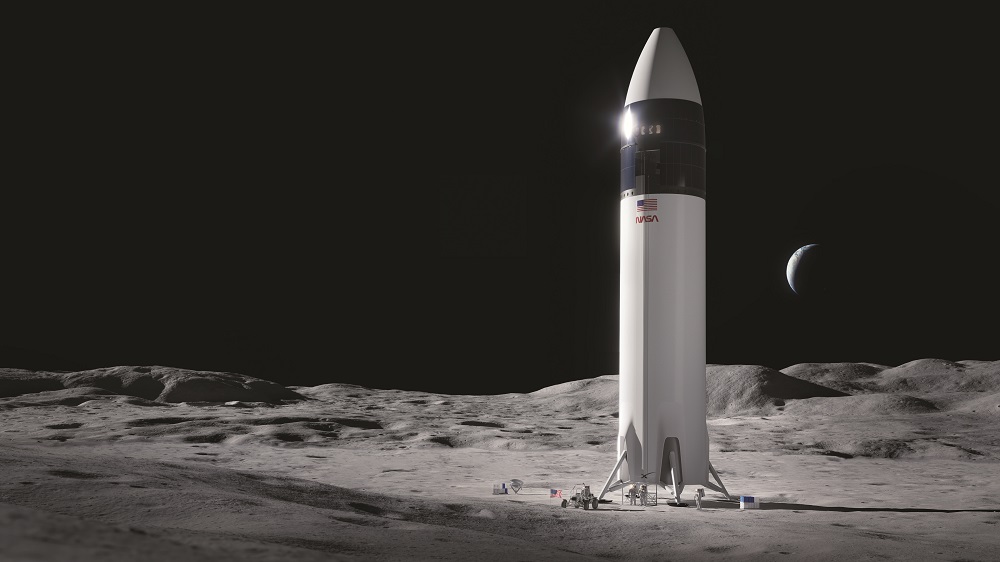Products You May Like
WASHINGTON — A House appropriations subcommittee advanced a spending bill July 12 that would provide NASA with a small increase over what the administration proposed for fiscal year 2022, but does not address some key areas of concern.
The commerce, justice and science (CJS) subcommittee favorably reported a spending bill that provides $25.04 billion for NASA in fiscal year 2022. That would be 7.6% higher than what NASA received in 2021, but just 1% above the administration’s request of $24.8 billion released in May.
The biggest change in the budget is in NASA’s exploration account, which would get $7.28 billion in the bill, nearly $400 million above the request. While funding for the Orion spacecraft is kept constant, the bill increases funding for the Space Launch System, Exploration Ground Systems and Exploration Research and Development.
In the brief subcommittee markup session, Rep. Robert Aderholt (R-Ala.), ranking member of the subcommittee, mentioned the SLS increase in particular. “NASA seldom, if ever, provides Congress with a budget request for the Space Launch System that reflects program estimates,” he complained, calling for “multiyear acquisition plans” for long-term SLS production.
That included, he said, development of a cargo version of the SLS, which replaces the Orion spacecraft with a large payload fairing. “Congress must ensure the future of the SLS includes a cargo variant, which, in fact, has long been part of the NASA plan,” he said. “This capability will be integral to future lunar cargo and science missions.”
However, at a meeting of the steering committee of the planetary sciences decadal survey July 7, a NASA official said that the limited production rate of the SLS — currently one a year, and not slated to increase to two per year until as late as the early 2030s — meant that the cargo version of SLS would not be available until at least the late 2020s in order to support Artemis missions.
NASA’s science program would see an overall increase of $38 million compared to the request, with increases to planetary science and astrophysics offset partially by cuts to heliophysics and biological and physical sciences. Aeronautics would increase by $20 million, but space operations would be cut by $56 million.
The biggest proposed cut would be to NASA’s space technology account, which would be cut by $145 million compared to the request of $1.425 billion but would still be above the $1.1 billion it received in 2021. The bill also requires NASA to spent $227 million on the On-orbit Servicing, Assembly and Manufacturing (OSAM) 1 mission and $110 million for nuclear thermal propulsion technologies. NASA requested $227 million for OSAM-1 in its budget proposal but did not include funding for nuclear propulsion.
Aderholt mentioned the nuclear thermal propulsion funding in his comments at the markup, but expressed disappointment that the bill does not require the funding to support a flight demonstration by 2024, a goal supported in past years’ bills. NASA’s work on nuclear thermal propulsion is led by the Marshall Space Flight Center in Alabama.
“We need this technology to out-compete China as both countries continue deep space exploration,” he said. “Therefore, I am deeply disappointed that the long-standing bipartisan language requiring NASA to use $80 million of the funding for the design of a flight demonstration was not included. The omission imperils the progress of, and our previous investments in, nuclear thermal propulsion capabilities.”
The bill does not go into details about most programs, specifics contained in the report accompanying the bill that will be released when the full House Appropriations Committee marks up the bill July 15. For example, the bill is silent on the Human Landing System program, which is part of the Exploration R&D budget line that would get $150 million more than the nearly $2.4 billion requested.
NASA Administrator Bill Nelson has lobbied House and Senate appropriators to add funding to NASA’s budget to allow it to support a second HLS provider. The large amount of funding needed — more than $5 billion over several years — led Nelson to recommend that the funding be included in any jobs and infrastructure bill that Congress takes up outside of the normal appropriations process.
Aderholt criticized the bill for lack of direction on HLS. “This bill fails to adequately address recent unwise NASA decisions that have jeopardized the Human Landing System,” he said, a reference to NASA’s selection of a single company, SpaceX, for an HLS award because of limited budgets. “I believe this committee must provide appropriate direction to NASA to restore foundational aspects of this program.”
Other members of the committee mentioned NASA’s part of the overall $81.3 billion CJS bill only in passing. “This subcommittee’s commitment to American leadership in space science, space exploration and aeronautics research continues in this year’s bill,” said Rep. Matt Cartwright (D-Pa.), chairman of the subcommittee.
